03.07.2004 ELEVEN YEARS AFTER THE DEBUT OF THEIR LAST HIGH PERFORMANCE FOUR WHEEL DRIVE MODEL, THE 164 Q4, ALFA ROMEO WILL LAUNCH TWO NEW MODELS WITH THE Q4 BADGE AT THE PARIS MONDIAL THIS AUTUMN
Eleven years after the debut of their last high performance four wheel drive model, the 164 Q4, Alfa Romeo will launch two exciting sporty new models with the Q4 badge at the Paris Mondial this autumn.
The Crosswagon Q4, with its rugged off-road looks and raised ride height, and the more smooth and refined Sportwagon Q4, will aim to live up to a strong Alfa Romeo tradition of combining four wheel drive traction with out-and-out performance characteristics. Both of the new models will be equipped with permanent four-wheel-drive and a TORSEN C differential.
A history in 4x4 technology
With their sudden focus towards 4x4 vehicles, Alfa Romeo's rich history of producing such models is often overlooked.
Alfa Romeo's first 4x4 vehicle made it's debut as far back as 1951, and was designed by Guiseppe Busso for the Italian Defence Ministry. The project started life as a Willys Jeep which was acquired at Lugano and fitted with a 1900 engine. This became a working prototype with a lightly camouflaged front end.
Codenamed the AR51, the production version used a detuned engine, sourced from the 1900 berlina, delivering 65 hp. An AR52 civilian version was also produced alongside until production ceased in 1955. In total, 2.059 AR51's and only 154 AR52's were built respectively. This excludes 6 initial prototypes, including a diesel engined version.
In 1952, a pair of AR51's were entered in the Mille Miglia, of which one won the military category.
Nicknamed La Matta, or ‘The Mad Old Woman’, for its seemingly crazy off-road
capabilities, this original Alfa 4x4 model is now a highly sought-after collector’s item.
The La Matta was to be Alfa Romeo's last official 4x4 until the introduction of their Alfa 33 1.5 4x4, which was launched at the end of 1983. The 4x4 system on this car was not permanent and could be engaged by means of a lever in front of the gear lever. A year later saw the launch of the Pininfarina-designed Giardinetta version and represented one of the first so-called 'lifestyle' estates.
In 1991, the recently introduced Alfa Nuova 33 was fitted with a sportier interpretation of the 4x4 concept. The system, which was fitted to the Permanent 4 versions, was more complex than its predecessor and incorporated a set of sensors which managed the action of a viscous coupling. When the sensors detected significant differences between wheel rotation speeds across both axles, power was transferred to the rear wheels. This feature provided the 33 P4 with outstanding dynamic performance and active safety.
A year later, in 1992, the impressive 155 Q4 was launched. This car came equipped with a 2.0 turbocharged engine and was capable of 0-100 km/h in 7 seconds flat.
Developed from the legendary Lancia Delta Integrale, the 155 Q4 boasted a 4x4 system with three differentials: a conventional unit at the front; a central epicyclic unit that engaged directly with the gearbox layshaft incorporating an integral Ferguson viscous coupling; and a TORSEN unit at the rear. Under normal conditions, the central distribution provided the rear wheels with slightly more power. If one of the two axles lost grip excessively, the Ferguson coupling cut in to transfer drive torque (up to 100%) gradually to the wheels with more grip. The efficacy of the system was further increased by the TORSEN rear differential that acted as a self-locking unit and allowed the wheels to turn at different speeds.
This transmission configuration was combined with particularly advanced ABS. This technical configuration ensured that the 155 Q4 remained sure-footed and safe in every situation. These attributes were also displayed by the V6 TI racing versions which were entered in the DTM German Touring Car Championship. The 4x4 Alfa Romeo's beat the rear-wheel-drive competition from Mercedes into submission.
The technology from the 155 Q4 was later applied to the stunning Italdesign-Giugiaro Schighera concept cars from 1997.
Alfa Romeo's incredible technical experience in 4x4 technology was applied to the range-topping 164 Q4 in December 1993. The 4x4 system had been further developed to ensure maximum performance and peak driving comfort. The heart of the system was the central Viscomatic viscous coupling developed exclusively by Alfa Romeo in conjunction with Steyr-Puch.
The Viscomatic system was managed by an onboard electronic system that communicated in real time with the engine and ABS control units. Every split second, the system detected and processed information on four different parameters: total drive torque requested, speed, steering angle and traction difference between the axles. It was able to adjust drive torque distribution between the axles with incredible speed on the basis of vehicle speed, cornering radius, engine rpm, throttle opening and closure and ABS parameters. This guaranteed improved torque distribution at any moment and in any situation. In this case too, the Q4 drive system was based on a TORSEN self-locking rear differential. This rear differential was responsible for the important task of redistributing the torque allocated to the rear end (in real time) between the wheels on the rear axle: this benefited traction and also car handling over mixed routes. An epicyclic unit was also fitted between the coupling and rear differential to amplify speed differences between coupling input and output. This made it faster and more sensitive while reducing the level of torque managed by the coupling.
The new generation
Alfa Romeo's
latest assault on the
all-wheel-drive market will be led by the Crosswagon Q4 and Sportwagon Q4.
Both will be equipped with permanent four-wheel-drive and a TORSEN C
differential.
Whilst
the ride-height of the Sportwagon Q4 will not deviate from the standard 156
range, the Crosswagon will have an increased ground clearance by 6,5 cm.
The Crosswagon will also come equipped with protective off-road cladding,
including aluminium trim on the door-bottoms, reinforced bumpers with aluminium
mouldings, an original bumper grille, all-purpose bars and
rugged wheel arch extensions. Shod
with specially-designed 225/55 all-season tyres, the Crosswagon will come
standard with 17-inch alloy wheels of a handsome 8-branch multispoke design.
Inside, the car features new dials, a digital compass mounted in the rear-view mirror, special carpeting and mats, a new high-tech lining for the facia and centre console and, on request, an exclusive MOMO leather upholstery.
The new permanent 4-wheel drive transmission has three differentials, and torque distribution favouring the rear axle. Torque distribution between the front and rear axles is continuously modulated, depending on the grip of the TORSEN C central differential.
The self-locking TORSEN C differential makes better use of engine torque: when accelerating, for example, it can deliver around 70% torque to the rear wheels. This eliminates the chance of understeer and torque steer. In oversteering situations, the figure of rear-wheel-drive is only 40%.
The mechanical modulation is smooth and continuous, thus giving the driver the impression of an excellent, smooth and easy ride. In terms of grip, the car adapts gradually and linearly to changing road conditions.
At the cutting-edge in technical terms, the Crosswagon provides unexpected benefits.
The Crosswagon will come with a 150 bhp version of the 1.9 JTD 16V M-Jet, together with a 6-speed gearbox. This will power the Crosswagon to 192 km/h and provide an acceleration time from 0 to 100 km/h in 10,2 seconds.
According to the manufacturer, the Crosswagon will consume 10,7 km/l of diesel in the urban cycle and 17,2 km/l in the out-of-town cycle. The combined cycle is 14.1 km/l.
The
Crosswagon will be on sale throughout
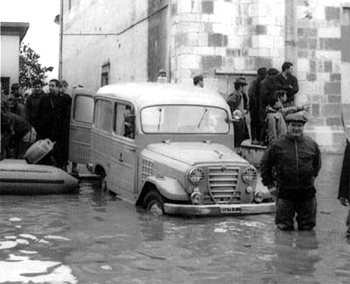 |
||
|
||
 |
||
|
||
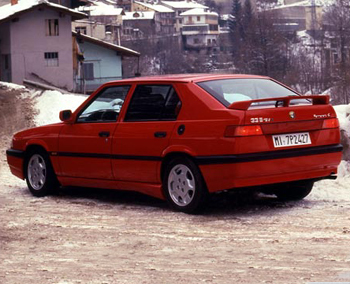 |
||
|
||
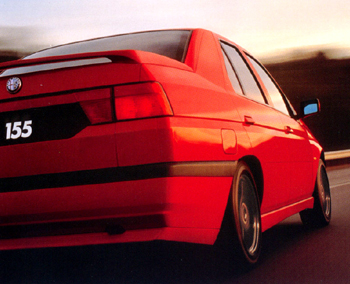 |
||
|
||
 |
||
|
||
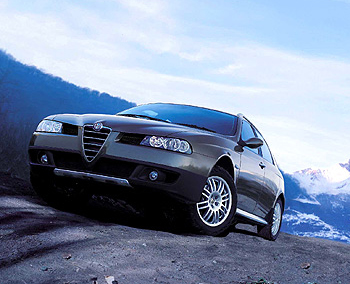 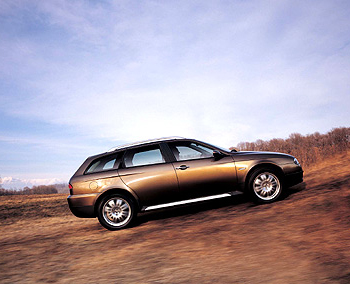 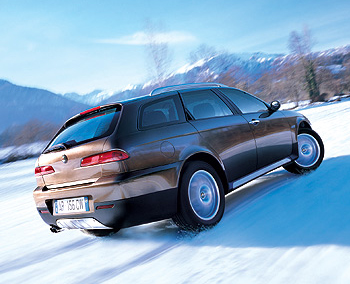 |
||
|
